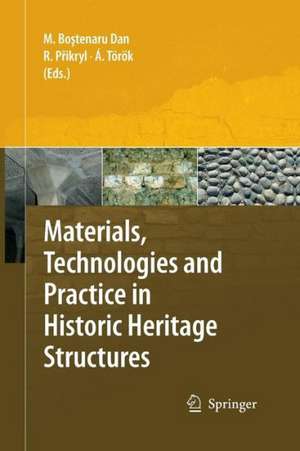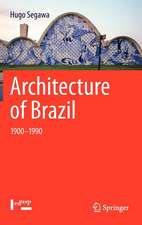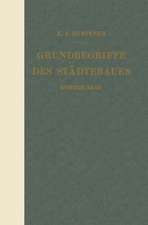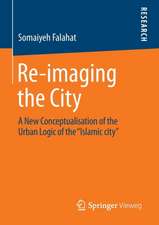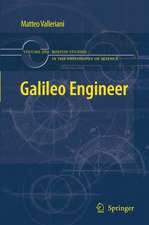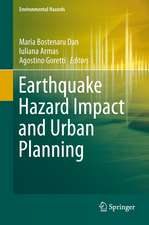Materials, Technologies and Practice in Historic Heritage Structures
Editat de Maria Bostenaru-Dan, Richard Pøikryl, Akos Töröken Limba Engleză Paperback – 26 noi 2014
The editors here add to the knowledge base treating the materials used in historic structures, their properties, technology of use and conservation, and their performance in a changing environment. The book draws together 18 chapters dealing with the inorganic materials used in historic structures, such as adobe, brick, stone, mortars, concrete and plasters. The approach is complex, covering material characterisation as well as several case studies of historic structures from Europe, including Germany, Ireland, Italy, Poland, Portugal, Scotland, Slovenia and Spain, and the My Sõn Temples in Vietnam. An equally important component of the book covers the analysis of materials, together with a treatment of sustainable development, such as the protection of monuments from earthquakes and climate change.
The authors are all leading international experts, drawn from a variety of backgrounds: architecture, civil engineering, conservation science, geology and material science, with close links to professional organisations such as ICOMOS or universities and research centres throughout Europe.
Audience: This book will be of interest to geologists,engineers, restorers, consulting engineers, designers and other professionals dealing with cultural heritage and sustainable development. Also graduate students in applied geo-science (mineralogy, geochemistry, petrology), architecture and civil engineering will find interesting information in this book.
| Toate formatele și edițiile | Preț | Express |
|---|---|---|
| Paperback (1) | 949.10 lei 6-8 săpt. | |
| SPRINGER NETHERLANDS – 26 noi 2014 | 949.10 lei 6-8 săpt. | |
| Hardback (1) | 953.65 lei 6-8 săpt. | |
| SPRINGER NETHERLANDS – 17 dec 2009 | 953.65 lei 6-8 săpt. |
Preț: 949.10 lei
Preț vechi: 1157.44 lei
-18% Nou
Puncte Express: 1424
Preț estimativ în valută:
181.62€ • 194.20$ • 151.42£
181.62€ • 194.20$ • 151.42£
Carte tipărită la comandă
Livrare economică 17 aprilie-01 mai
Preluare comenzi: 021 569.72.76
Specificații
ISBN-13: 9789400791039
ISBN-10: 9400791038
Pagini: 392
Ilustrații: XVII, 371 p.
Dimensiuni: 155 x 235 x 21 mm
Greutate: 0.55 kg
Ediția:2010
Editura: SPRINGER NETHERLANDS
Colecția Springer
Locul publicării:Dordrecht, Netherlands
ISBN-10: 9400791038
Pagini: 392
Ilustrații: XVII, 371 p.
Dimensiuni: 155 x 235 x 21 mm
Greutate: 0.55 kg
Ediția:2010
Editura: SPRINGER NETHERLANDS
Colecția Springer
Locul publicării:Dordrecht, Netherlands
Public țintă
Professional/practitionerCuprins
Adobe and Bricks.- Technology of Rammed-Earth Constructions (“Tapial”) in Andalusia (Spain): Their Restoration and Conservation.- Ancient Clay Bricks: Manufacture and Properties.- The M? S?n Temples in Vietnam: Construction Techniques and Structural Issues.- Natural Stone.- The White and Coloured Marbles of the Roman Theatre of Copia(Cosenza, Italy).- Black “Marble”: The Characteristic Material in the Baroque Architecture of Cracow (Poland).- Understanding the Long-Term Survival of Sandstone in Medieval Ecclesiastical Structures: Northern Ireland and Western Scotland.- The City of Dresden in the Mirror of its Building Stones: Utilization of Natural Stone at Façades in the Course of Time.- Determination of Source Areas of Natural Stones: A Methodology Approach Applied to Impure Crystalline Limestones.- In Situ Methods of Testing Stone Monuments and the Application of Nondestructive Physical Properties Testing in Masonry Diagnosis.- Binders, Concrete and Mixed Materials.- The Use of Lime Mortars in Restoration Work on Architectural Heritage.- The Basilica of Maxentius and Its Construction Materials.- Characterization of Ancient Pozzolanic Mortars from Roman Times to the 19th Century: Compatibility Issues of New Mortars with Substrates and Ancient Mortars.- Roman Cements: Key Materials of the Built Heritage of the 19th Century.- Historic Mortars and Plasters as a Material for Age Determination.- Reinforced Concrete Constructions at the Beginning of the 20th Century: Historical Review and Structural Assessment.- Monitoring the Seismic Risk.- Heritage Masonry Buildings and Reduction of Seismic Risk: The Case of Slovenia.- Acoustic Emission Monitoring of the Cathedral of Palma de Mallorca (Spain).
Textul de pe ultima copertă
One distinct feature of human society since the dawn of civilization is the systematic use of inorganic building materials, such as natural stone, unburnt and burnt soil, adobe and brick, inorganic binders like lime and cement, and reinforced concrete. Our heritage has cultural, architectural and technological value and preserving such structures is a key issue today. Planners and conservation scientists need detailed site surveys and analyses to create a database that will serve to guide subsequent actions. One factor in this knowledge base is an understanding of how historic materials were prepared and the crucial properties that influence their long-term behaviour. Any assessment of the way such materials perform must crucially be based on an understanding of the methods used for their analysis.
The editors here add to the knowledge base treating the materials used in historic structures, their properties, technology of use and conservation, and their performance in a changing environment. The book draws together 18 chapters dealing with the inorganic materials used in historic structures, such as adobe, brick, stone, mortars, concrete and plasters. The approach is complex, covering material characterisation as well as several case studies of historic structures from Europe, including Germany, Ireland, Italy, Poland, Portugal, Scotland, Slovenia and Spain, and the My Sõn Temples in Vietnam. An equally important component of the book covers the analysis of materials, together with a treatment of sustainable development, such as the protection of monuments from earthquakes and climate change.
The authors are all leading international experts, drawn from a variety of backgrounds: architecture, civil engineering, conservation science, geology and material science, with close links to professional organisations such as ICOMOS or universities and research centres throughout Europe.
Audience: This book will be of interest to geologists,engineers, restorers, consulting engineers, designers and other professionals dealing with cultural heritage and sustainable development. Also graduate students in applied geo-science (mineralogy, geochemistry, petrology), architecture and civil engineering will find interesting information in this book.
The editors here add to the knowledge base treating the materials used in historic structures, their properties, technology of use and conservation, and their performance in a changing environment. The book draws together 18 chapters dealing with the inorganic materials used in historic structures, such as adobe, brick, stone, mortars, concrete and plasters. The approach is complex, covering material characterisation as well as several case studies of historic structures from Europe, including Germany, Ireland, Italy, Poland, Portugal, Scotland, Slovenia and Spain, and the My Sõn Temples in Vietnam. An equally important component of the book covers the analysis of materials, together with a treatment of sustainable development, such as the protection of monuments from earthquakes and climate change.
The authors are all leading international experts, drawn from a variety of backgrounds: architecture, civil engineering, conservation science, geology and material science, with close links to professional organisations such as ICOMOS or universities and research centres throughout Europe.
Audience: This book will be of interest to geologists,engineers, restorers, consulting engineers, designers and other professionals dealing with cultural heritage and sustainable development. Also graduate students in applied geo-science (mineralogy, geochemistry, petrology), architecture and civil engineering will find interesting information in this book.
Caracteristici
Chapters on concrete, which are not included in the other books Chapters relating to more recent information on materials in conservation, also those used for conservation, not only those to be conserved (FRP) Combines the view from natural sciences and the architect's view in conservation More condensed information on the various materials than the numerous volumes edited/written by others More coherent approach including only wall materials and excluding timber and metal Includes supplementary material: sn.pub/extras
